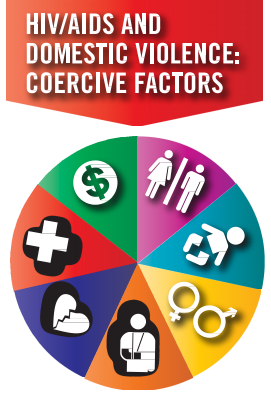 At the core of domestic violence advocacy is safety planning with survivors who are currently living in abusive homes, preparing to leave an abuser, or have left an abuser. Disclosure of HIV status is another pivotal moment in a survivor’s life where they may want to think of a safety plan.
At the core of domestic violence advocacy is safety planning with survivors who are currently living in abusive homes, preparing to leave an abuser, or have left an abuser. Disclosure of HIV status is another pivotal moment in a survivor’s life where they may want to think of a safety plan.
For people living with abusers, violence is a real barrier to disclosing HIV status. One study showed that 45% of women living with HIV experienced physical abuse as a direct consequence of disclosing their HIV status (AIDS United, 2014).
Additionally, it may be an additional tool of control abusers use to disempower survivors. Fear of violence, fear of “outing” of status, fear of losing children, social stigma, abusers interfering with medical treatment, negative health impacts of abuse, increased verbal and emotional abuse and put-downs, and health insurance provided by the abuser are all special considerations to make while safety planning with HIV positive survivors.
"Survivors of domestic violence are often limited in their ability to negotiate safe sex practices, thereby increasing their chances of contracting HIV/AIDS. The presence of violence in a relationship may also make it difficult for someone to get tested for HIV/AIDS, disclose their results, or access health care or supportive services. It is important that domestic violence advocates are very comfortable in discussing sexual behavior and history, sexual violence and the risks for HIV acquisition, and risk reduction as part of safety planning." - NNEDV, 2014









